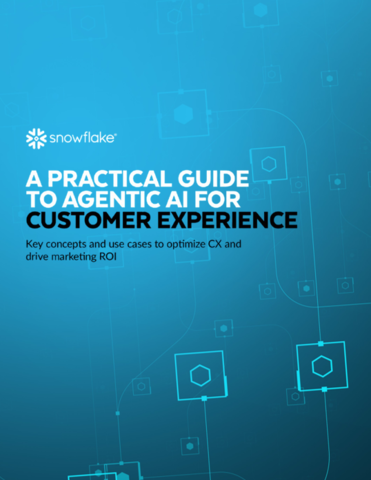AI in 2026: beyond the hype
Alexia Pedersen at O’Reilly looks towards a future of artificial intelligence generated efficiency and agency

The discussion around AI has been dominated by some dramatic figures this year: trillion-dollar market caps, record-breaking fundraising rounds, and projected power demands that rival the consumption of entire nations. The growing concern about whether we are experiencing a speculative AI bubble is completely understandable. Yet some of the most eye-catching claims may be performative; less about securing actual investment, and more about shaping perception.
This raises a critical question: if so much of the growth story is forward-looking, what happens when one of the dominant firms falters? The interconnectedness of today’s AI ecosystem means that failure won’t happen in isolation. While it’s not guaranteed that the AI bubble will burst, 2026 or 2027 may be a time where rhetoric and reality are forced to converge.
A divergence in global AI strategy
In the U.S., headlines continue to centre around building ever-bigger AI models, but we’re seeing a different approach taking shape in other markets. In China, for example, recent launches like DeepSeek OCR, Minimax M2, and Kimi Linear are deliberately optimised rather than oversized. These models focus on delivering strong performance at much lower compute and energy cost, proving that you don’t need to scale endlessly to make meaningful progress.
This reflects two contrasting philosophies: growth through scale versus growth through optimisation. In a world where energy infrastructure is strained and sustainability pressures continue to mount; the advantage may ultimately shift to the systems that deliver more intelligence per watt. The next era of AI competition may be won not by the biggest models, but by the most efficient.
From experimentation to implementation
It’s no surprise to see AI investment reaching record levels in the UK. Surveys consistently show that AI is now a central strategic focus for organisations, not an experimental side project. On the supply side, the ecosystem of tools has expanded, ranging from start-ups to established enterprise vendors and major cloud platforms. On the demand side, the skills and knowledge required to build solutions have become more accessible. Usage patterns on the O’Reilly learning platform reflect this shift: from 2023 to 2024, engagement with generative AI content grew 289%, while interest in AI principles and governance grew even faster, at 386%. This suggests organisations are no longer just curious, they are preparing to deploy at scale, responsibly.
There has also been significant progress in applying AI to specific functional areas. Computer vision, speech technologies, and natural language understanding are maturing rapidly. Traditional analytics workflows, recommendation, forecasting, personalisation and anomaly detection, are being re-architected with AI at their core. Importantly, organisations can now point to real case studies, not just proofs of concept, with measurable impact on efficiency and decision quality.
As we enter this implementation phase, advantage accrues to companies with two critical assets: access to meaningful data and leaders who can rapidly build and iterate. This highlights a national challenge. The UK will need to remain open to technical talent and entrepreneurial leadership to maintain momentum. Competition for that talent is intensifying across Europe, and research shows that 71% of UK technology professionals believe the skills gap could slow national progress toward AI leadership. Innovation alone is not enough; the conditions for scaling innovation must also be in place.
The rise, and limits, of agents
The rise of AI agents was one of the defining developments of the past year. These systems can plan, take multi-step actions, and operate with varying degrees of autonomy. In 2026, we will see broader enterprise adoption, particularly in areas where workflows are repetitive, procedural, or knowledge-retrieval-heavy.
Greater delegation brings new responsibility, sending an agent to automatically execute complex financial tasks, for example, requires clarity around oversight, accountability, and error handling. Differences between models matter here - reasoning, reliability, and interpretability are not uniform across systems. The coming year may test how comfortable organisations really are with allowing AI to think and act on their behalf.
Unlocking enterprise knowledge through multimodality
Another major area of progress will be multimodal AI. While public attention often focuses on generative video and image creation, the enterprise use case is more pragmatic. The majority of organisational knowledge does not exist in neatly structured text, it is buried in slide decks, PDF manuals, video recordings, and shared drives. Multimodal systems will enable companies to search, summarise, and operationalise this data for the first time at scale.
This is less about novelty, and more about releasing trapped value.
The case for smaller, embedded AI
2026 and 2027 are set to be the years that small, embedded AI systems gain meaningful traction. These models run locally on devices without needing to transmit sensitive data externally. They support privacy-preserving applications, reduce infrastructure dependency, and lower operational costs.
After years of centralising intelligence in the cloud, we are beginning to distribute it back outward - into the objects, tools, and environments of daily life.
What’s next for AI?
The story of AI in 2026 will not be defined by scale alone, it will be shaped by efficiency, agency, accessibility, and the strategic choices made in how, and where, intelligence is deployed. The next phase is less about building the biggest system, and more about building the right one, and to get the most from AI, organisations must supercharge their people with new skills and training to fully realise the value of their AI investments.
Alexia Pedersen is SVP International at O’Reilly
Main image courtesy of iStockPhoto.com and Lemon_tm

Business Reporter Team
Most Viewed
Winston House, 3rd Floor, Units 306-309, 2-4 Dollis Park, London, N3 1HF
23-29 Hendon Lane, London, N3 1RT
020 8349 4363
© 2025, Lyonsdown Limited. Business Reporter® is a registered trademark of Lyonsdown Ltd. VAT registration number: 830519543





